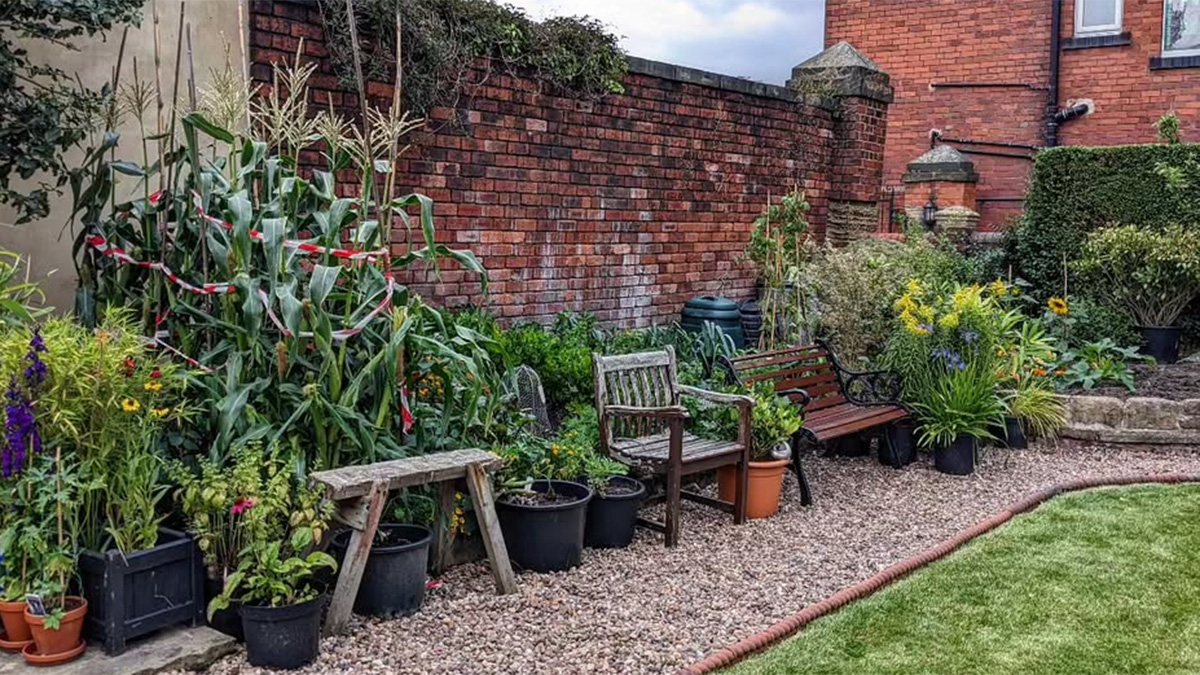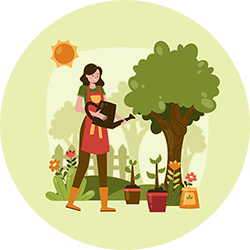Advanced Tips for Growing Vegetables in Containers

Container gardening is a great way to grow fresh vegetables in small spaces, but getting bigger harvests takes more than just pots and potting mix. With the right techniques, you can boost productivity and grow healthy, high-yield plants in almost any setting. In this guide, you’ll learn advanced container gardening tips to help your vegetables thrive all season long.
Related: Create a Productive Vegetable Garden Using 5 Gallon Buckets
Why container gardening requires a different approach
Growing vegetables in containers comes with unique challenges and opportunities. Limited root space, faster moisture loss, and temperature swings can affect plant growth. However, with careful planning and attention, container gardens can be just as productive as traditional garden beds.
One of the advantages is that you can control the soil quality and move containers to optimize sun exposure. You can also reduce pest pressure and avoid problems like soil-borne diseases. But getting bigger harvests requires more than just planting in pots and hoping for the best.
Choose the right containers for root development
Selecting the correct container size is crucial for healthy root growth and overall plant productivity. Larger vegetables like tomatoes, peppers, or squash need deeper pots with a minimum of 5 gallons of capacity. Leafy greens and herbs can thrive in shallower containers, but they still need room to spread.
Fabric grow bags are excellent for airflow and drainage, which promotes healthier roots. Self-watering containers can help maintain consistent moisture levels during hot weather. Avoid overcrowding by giving each plant enough space to develop fully.
Vertical vegetable gardening options like stacked planters or trellised pots can also help maximize space without sacrificing yield. Choose materials that won’t overheat or dry out quickly, such as glazed ceramic, plastic, or cloth bags. Good drainage holes are a must for every container you use.
Use a high-quality soil mix designed for containers
Soil in containers needs to be loose, well-draining, and full of organic matter. Garden soil alone is too dense and can lead to poor root development and compaction. A good potting mix contains peat moss or coconut coir, perlite or vermiculite, and compost.
You can create your own custom mix by blending one part compost, one part peat or coir, and one part perlite or pumice. This improves both water retention and drainage while providing nutrients. Regular soil amendments, like worm castings or aged compost, help maintain fertility over time.
Avoid using soil that has been previously used for diseased or pest-infested plants. Always check that your mix is free of weed seeds and pathogens. Renewing or replenishing your potting mix each season supports strong, consistent growth.
Optimize feeding with consistent, balanced fertilization
Container vegetables require more frequent feeding than those grown in the ground. Nutrients wash out more quickly during watering, which can lead to deficiencies if not addressed. Start by mixing a slow-release organic fertilizer into the soil at planting.
Supplement with a liquid feed every one to two weeks during the growing season. Choose balanced NPK ratios or tailor them to plant needs, such as higher nitrogen for leafy greens or more phosphorus for fruiting crops. Fish emulsion, kelp extract, and compost tea are excellent natural options.
Monitor your plants for signs of over- or underfeeding, such as pale leaves or slowed growth. It’s better to feed lightly and consistently than to overdo it. Keeping a fertilization schedule ensures steady plant development and better yields.
Master the timing and technique of watering
Proper watering is one of the most important factors in container gardening success. Because pots dry out faster than garden soil, they may need watering once or even twice a day in hot weather. Stick your finger an inch into the soil to check moisture before watering.
Use mulch like straw or shredded leaves on top of the soil to help retain moisture. Drip irrigation systems or self-watering setups can automate the process and deliver water more efficiently. Always water early in the day to avoid fungal issues and give plants time to absorb moisture.
Be careful not to overwater, as soggy soil can lead to root rot. Use containers with adequate drainage and elevate them slightly if necessary. Adjust your watering routine based on the weather, plant type, and container size.
Monitor microclimates and position containers for success
Container placement has a big impact on growth and yield. Track how much sunlight different areas of your garden, patio, or balcony receive throughout the day. Most vegetables need at least 6 to 8 hours of direct sunlight to produce well.
Adjust container locations as seasons change to keep plants in the optimal light. Use reflective surfaces like light-colored walls or mulch to boost light in partially shaded areas. Wind protection can prevent moisture loss and physical damage, especially on balconies or rooftops.
Shade cloth can help reduce heat stress during intense summer days without completely blocking sunlight. If you grow on concrete or asphalt, insulate your pots to prevent overheating. Containers also benefit from being grouped together, which helps maintain humidity and reduces wind exposure.
Support root and plant health with pruning and training
Pruning helps focus energy on productive parts of the plant and improves airflow. For vining crops like tomatoes, cucumbers, or peas, training plants on vertical supports keeps them off the soil and allows better sun exposure. Remove suckers from tomato plants and trim excess foliage to reduce disease risk.
Bushy crops like peppers or eggplants benefit from thinning lower leaves and shaping for air circulation. Use cages, stakes, or trellises to guide growth and support fruit-heavy branches. Container plants are especially prone to toppling over, so secure them early before growth gets out of control.
Harvesting regularly also acts like a natural form of pruning. The more you harvest, the more energy the plant invests in producing new growth. Timely pruning can directly influence the size and quality of your harvest.
Companion planting and pest control in containers
Just like in garden beds, companion planting in containers can improve growth and reduce pest issues. Pair tomatoes with basil, or lettuce with radishes and chives. These combinations help mask scents, attract pollinators, or deter pests.
Watch for common container pests like aphids, whiteflies, and spider mites. Neem oil, insecticidal soap, or a strong spray of water can keep outbreaks under control. Marigolds, nasturtiums, and other pest-repelling flowers can also be grown alongside vegetables.
Avoid overcrowding and remove dead or damaged leaves promptly. Use floating row covers or netting for physical protection if needed. Healthy plants in well-maintained containers are naturally more resistant to pests and disease.
Rejuvenate soil between plantings
Over time, soil in containers becomes depleted of nutrients and may compact or develop imbalances. After each growing season, evaluate whether to replace or amend the mix. Remove old roots and mix in fresh compost, organic fertilizer, or worm castings.
You can also solarize used soil by leaving it in the sun under clear plastic for a few weeks to kill pathogens. Rotate crops in your containers just as you would in the ground. Avoid planting the same family of vegetables in the same soil without replenishing nutrients.
If a container had a particularly demanding crop like tomatoes, give it a break by planting leafy greens or herbs next. This prevents nutrient exhaustion and gives the soil time to recover. Regular soil care leads to more consistent and productive harvests over time.
Plan for continuous planting and succession crops
One of the best ways to maximize harvests in containers is to plan for continuous production. Start with fast-maturing crops like radishes, arugula, or spinach, then follow with a warm-season crop. As soon as one plant finishes, replant the space with another suitable variety.
Mix direct sowing with transplants to keep containers from sitting empty. Keep a few seedlings on standby to quickly fill any gaps. Cool-season crops like lettuce or carrots can follow summer fruiting plants to extend your harvest into fall.
Track your planting dates and harvest windows using a garden journal or calendar. Succession planting requires a bit of planning but delivers more food per container across the season. It also helps you make the most of limited growing space.
Frequently asked questions
How often should I fertilize container vegetables?
Most container vegetables benefit from light feeding every one to two weeks during active growth. Combine slow-release fertilizers at planting with regular liquid applications for best results.
What vegetables give the biggest yields in containers?
Tomatoes, peppers, bush beans, and leafy greens are high-yielding crops that grow well in containers. Herbs and salad greens offer quick, repeat harvests in small spaces.
Can I reuse container soil year after year?
Yes, but it needs to be refreshed with compost and nutrients. Remove old roots, fluff the mix, and add amendments before planting again. Replace the soil entirely if disease or pest issues occurred.
What’s the best container material for vegetables?
Plastic, fabric grow bags, and glazed ceramic pots are all good choices. Each has pros and cons, but all should allow for good drainage and insulation from temperature extremes.
Conclusion
By applying a few advanced techniques, you can take your container gardening from basic to bountiful. From better soil and smarter watering to crop rotation and pruning, every small improvement adds up to bigger, healthier harvests. Whether you’re growing on a balcony, patio, or porch, these tips will help you make the most of every container.
